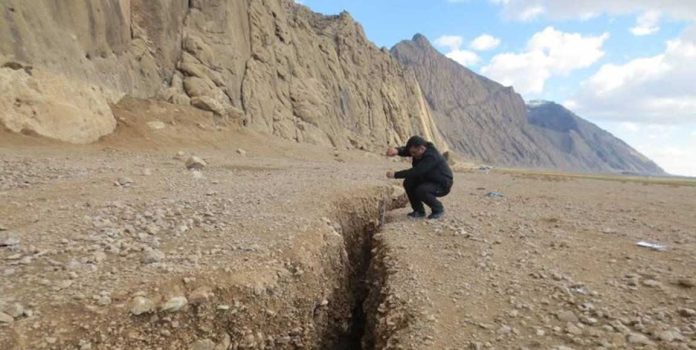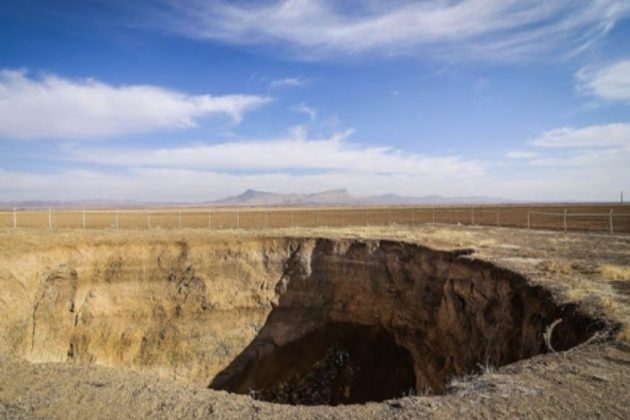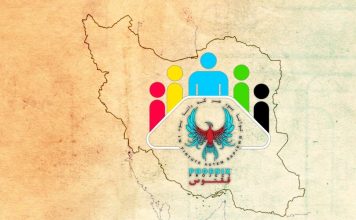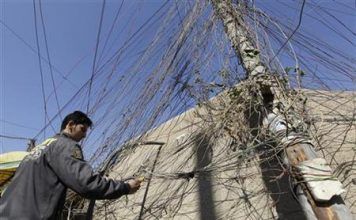By Kayhan Life Staff
Land subsidence poses a severe threat to 35 percent of the Iranian population, living in more than half of the country’s provinces, according to a recent report by the Majlis (Iranian Parliament) Research Center.
The report cited a 2019 study that warned that the surface layer of Iranian planes in 18 provinces was collapsing at an alarming rate, five times the global land subsidence rate.
Unlike earthquakes and floods, which have immediate and visible impacts, the damage caused by land subsidence is gradual and not readily visible but just as devastating.
The report also highlights the devastating impact of land subsidence on the environment and wildlife.
Subsidence is caused by the removal of water from the ground through pumping, fracking, or mining. Subsidence can also be caused by natural events such as earthquakes, soil compaction, erosion, sinkhole formation, and the addition of water to fine soils deposited by wind.
The chemical dissolution of carbonate rocks and the over-pumping of the groundwater and reservoirs cause the collapse of the entire surface layer in plains.
Subsidence can fill pockets within the soil that serve as natural reservoirs for underground water. As a result, soil loses its permutability, resulting in what experts call the “death of aquifers” (underground layers).
Impermeable sedimentary layers cause surface runoff and flood waters in the plains, severe erosion of agricultural soil, and depletion of nutrients.
Subsidence can turn one centimeter of fertile soil, which takes a decade to form, into a desert in no time. Also, subsidence in certain areas can cause the collapse of the surface layer, creating sinkholes.
The report by the Majlis Research Center cited a study of 609 plains that showed 410, equivalent to 33.67 percent, had reached “supercritical” conditions by 2022.
Nearly 75 percent of the over-pumping of the groundwater and reservoirs occurred in central basins and eastern plateaus, homes to roughly half of the country’s population.
The data highlighted the severe effects of land subsidence on intercity roads, highways, national railways, metro lines, airports, transportation, shipping, power transmission (oil, gas, and electricity) supply, and water and sewage pipelines.
Some rail tracks, which run through desert and mountainous regions, including those in the provinces of Isfahan (center), Fars (southwest), and Hamadan (west, in Zagros Mountain), are already facing critical conditions.
The report said that the provinces of Tehran (north) and Kerman (southeast) are also severely affected by land subsidence.
It warned that subsidence threatened 10,000 square kilometers of Isfahan Province, which included 30,300 residential units, the refinery for the Shahid Beheshti Power Plant, Naghsh-e Jahan Stadium, Shahid Beheshti International Airport, high-pressure power poles in Mahmoud Abad industrial Complex, fuel lines to Nain Military Airport, intercity railways (particularly Isfahan-Shahin Shahr line), and historical sites such as Zayandeh Roud Bridge.
“The discrepancy between water resources planning and the true water consumption has led to groundwater overuse and depletion,” the report noted. “Nearly 18.9 billion cubic meters of groundwater reserves were overused by September of this year.”
“Overusing groundwater reserves has resulted in the depletion of static water (water level), the death of aquifers, and serious environmental harm. The country’s groundwater reserves will be depleted by 143 billion cubic meters by September 2022,” it explained.
Ali Beitollahi, the director of the Road, Housing, and Urban Development Research Center’s Earthquake Engineering and Risk Assessment Department, recently criticized the 7th National Development Plan for failing to address the land subsidence problem in the country.
Mr. Beitollahi warned that the absence of tighter building regulations in regions affected by land subsidence could cause mass evacuation of some cities.
Satellite images taken a decade ago of Marvdasht, in Fars Province, showed that a small segment of the land surrounding the city was affected by subsidence. However, the latest pictures and research in the past 15 years have shown that a large segment of the surface layer of the entire region is collapsing at an alarming rate. As a result, massive cracks have appeared on the ground, some as wide as 70 centimeters.
The same study has shown extensive areas affected by subsidence in the Shiraz Plain, in the Fars Province, which stretches from Maharloo Lake, a saltwater lake 27 kilometers southeast of the capital Shiraz, to the northwest of the city.
Land subsidence also threatened the large population of several other Iranian provinces.
In May of this year, Dr. Masumeh Amighpay, the head of the Iran National Cartographic Center’s Office for Differential Leveling and Survey, warned about a severe threat posed by land subsidence to several Iranian cities.
According to Dr. Amighpay, 15 major cities in the country are affected by subsidence. The downward vertical movement of the Earth’s surface damages the foundation of buildings, posing a severe health and safety risk to the population in these cities.
The latest reports showed that in the city of Isfahan alone, 820 homes, 6,000 historical buildings, two refineries, a sports stadium, and three airports had been affected by land subsidence, posing a severe health and safety risk to 2.5 million people living in the city and surrounding areas.
Hamidreza Khan-Mohammadi, Iran’s Deputy Education Minister for Development, and the director of the office for school renovation, said in July that several school buildings in Theran and Isfahan had been deemed unsafe because of land subsidence, which caused parts of them to collapse.
Many seismologists have warned about the rapid sinking of the surface layer in southern and western parts of Tehran.
Studies have shown that the Rafsanjan (southeast), Zarand (southeast), Mashhad (northeast), and Ghazvin (northwest) plains sink by 30, 25, 25, and 24 centimeters every year, respectively.
In April, the head of Iran’s Crisis Management Organization, Mohammad Hassan Nami, released a report that said 125,000 square kilometers of Iran’s total area, i.e., 9 percent of its land mass, has been impacted by subsidence.
According to Mr. Nami, 200 cities and 9,200 villages with a population of nearly 19 million people face the dangerous effects of subsidence.
















